Hazelnuts are the fruit of the Hazelnut plant, also known as the standard or wild Hazelnut. Hazelnut trees (Corylus avellana) grow 10 to 20 feet tall with a spread of about 15 feet. You can let them grow naturally as a shrub or prune them into a small tree. Either way, they are an attractive addition to the home landscape.
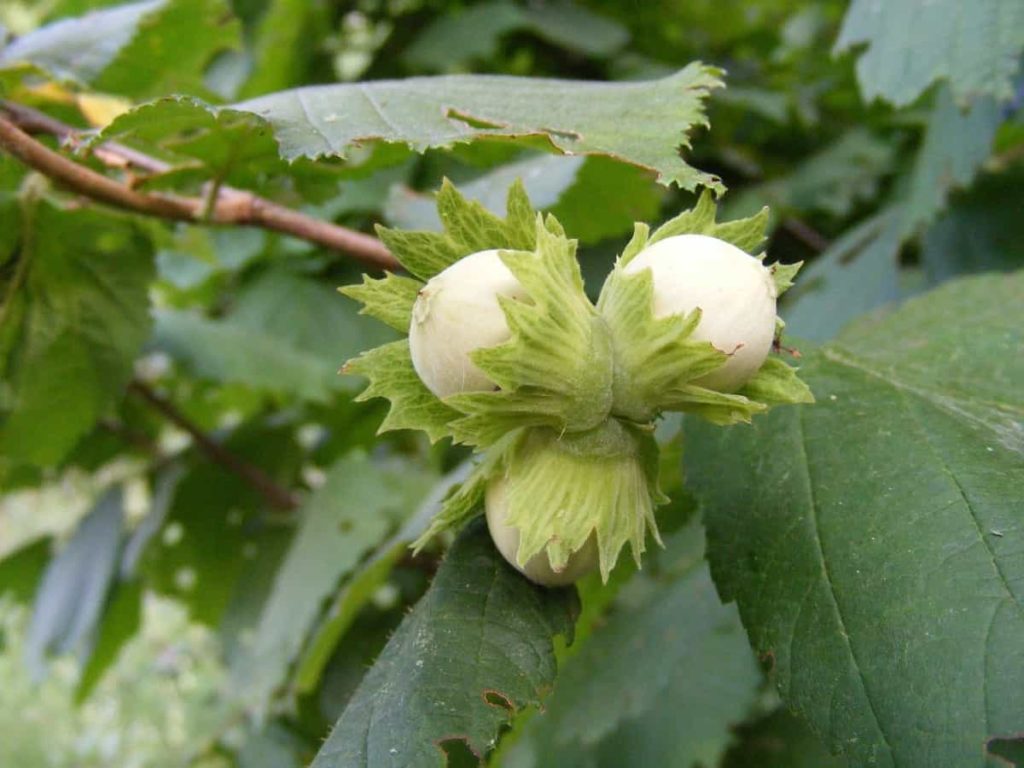
It is a deciduous tree with rounded leaves 2 to 5 inches long and hairy on the sides. The following are some important steps to achieve a high Hazelnut yield is recommended. Let’s check out the Top 15 steps/ways/methods to boost Hazelnut yield below.
Top 15 steps/ways/methods to boost Hazelnut yield
Step 1: Select high-yield varieties for more production
Barcelona
Barcelona is the main variety grown in the Pacific Northwest, accounting for 60% of the commercial area. It is also popular among home growers for its heavy production of large, flavorful nuts. It prefers a little shade in hot and sunny areas. It grows to about 18 feet tall and ripens in August.
Daviana
Daviana is a good companion for Barcelona varieties because they pollinate freely. It grows up to about 15 feet tall and ripens in August.
American Hazelnut
It is native to the Eastern and Midwestern parts of the United States. Modern varieties resist eastern filbert blight and produce small, thick-shelled nuts in the fall. Grows to about 18 feet tall. In addition to short and thick scales, native Hazelnuts exhibit a wide range of adaptability and disease resistance.
The cold-sensitive but more commercially standard (large nut size) European Hazelnut, along with the American or beaked Hazelnut, can greatly expand the range of commercial Hazelnuts that can be grown as hybrid disease resistant well, adapted—the American climate with significantly better nuts.
In case you missed it: Hazelnut Farming, Cultivation, And Production
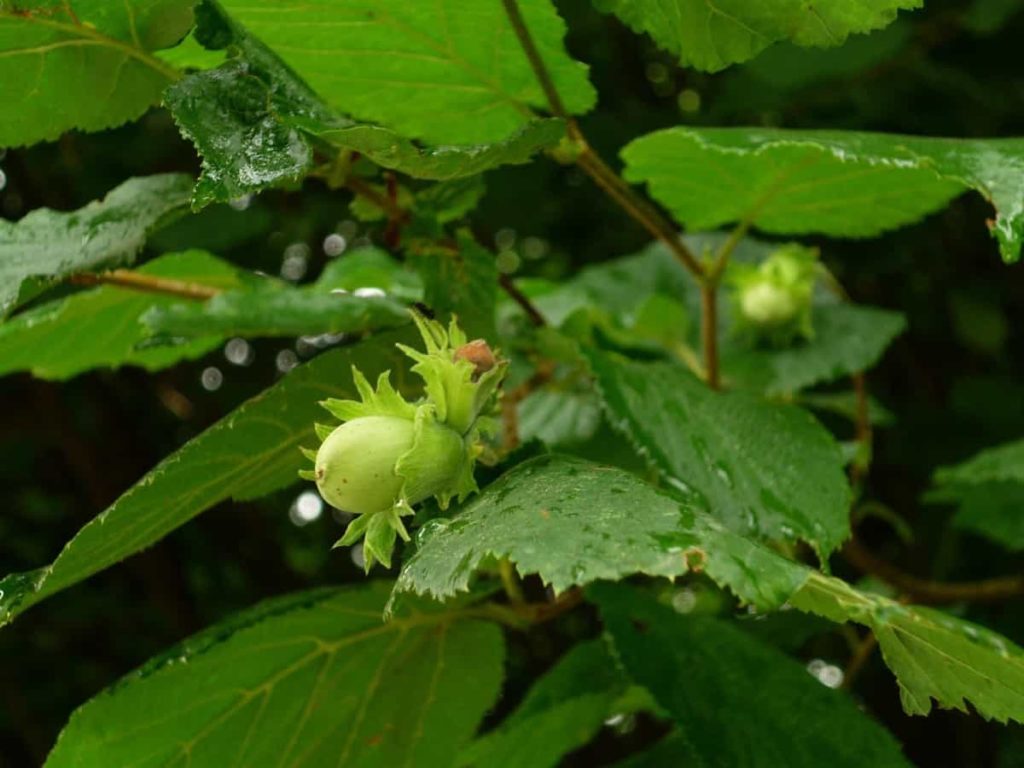
Beaked Hazel
Beaked hazel is native to North America, southern Canada, Pacific Northwest, and New England. Now, you can find disease-resistant varieties at nurseries. This small tree grows to about 12 feet tall and can also be grown in a container. Ripe in August.
European Hazelnut
The European or common Hazelnut is native to Europe and western Asia. They are usually shrubs but can also be grown as trees. The nuts of European Hazelnuts are mostly free-falling and larger than American or beaked nuts.
Step 2: Soil management for nuts growth
Hazelnuts require well-drained soil to a depth of about 1.8 meters. The tree has a primarily fibrous root system, but the deep soil allows for maximum exploitation of soil resources and heavy products in a mature orchard. In areas with shallow soil, trees initially grew but then declined. Heavy and very sandy soils should be avoided, and deep loams are preferred.
Some Hazelnut varieties have shown good plant growth on heavy soils, silt loams, and sandy loams. At depth, the pH of these soils can drop to 4.5. It was thought they could be planted on poor soil types because hazels in their wild state grow on poor soil and produce nuts, but now fertile soils are considered necessary for profitable commercial production. A neutral to slightly acidic soil means a pH of about 6 is suitable. Lime should be applied below pH 5.6.
Step 3: Sunlight requirement for more nuts production
Growing Hazelnut trees can handle a little shade, mainly in hot and dry areas. The trees need at least 4 hours of direct sunlight a day to grow well. The shadier the location, the less fruit the tree will produce.
Step 4: Precision irrigation to increase nut yield and size
Maintain optimal moisture in each phenological stage of Hazelnut growth. Precision irrigation promotes uniform flower and fruit development, increasing nut yield and size. Hazelnuts have shallow root systems. Drip irrigation ensures that all fertilizer reaches the roots, not just the soil, avoiding leaching and optimizing your investment.
Step 5: Planting spacing for better plant growth
Various spacings have been used to grow Hazelnuts, and more efficient methods have been adopted in recent years to increase yields and better use the available land area. The selection of tree planting distances should consider the relative strength of the variety, soil type, and width of equipment available in the garden. Closer vegetation may have to be thinned out at maturity, but high returns in the first ten years can be critical to the economic survival of new plantings.
Spacing of 4.5 meters is considered more efficient as the yield has the potential to double in the first ten years of spacing of 7.5 × 7.5 meters. Trees can be thinned out in the long run if excessive shading and crowding occur. Close planting also improves pollination and nut set. If planting in the landscape, leave enough space so the plants are not crowded to allow for sufficient nut production.
Step 6: Tips for growing Hazelnut from seeds
You can easily grow Hazelnuts from seeds. Plant the nuts in 6-inch pots filled with soil or at least 15 feet apart in the garden. First, the seed needs to be scored, which means using a file and scribing a small “slash” into the outer coat of the seed. It will help in germination.
In case you missed it: Growing Grapes In Greenhouse – Farming, Cultivation, Production In India
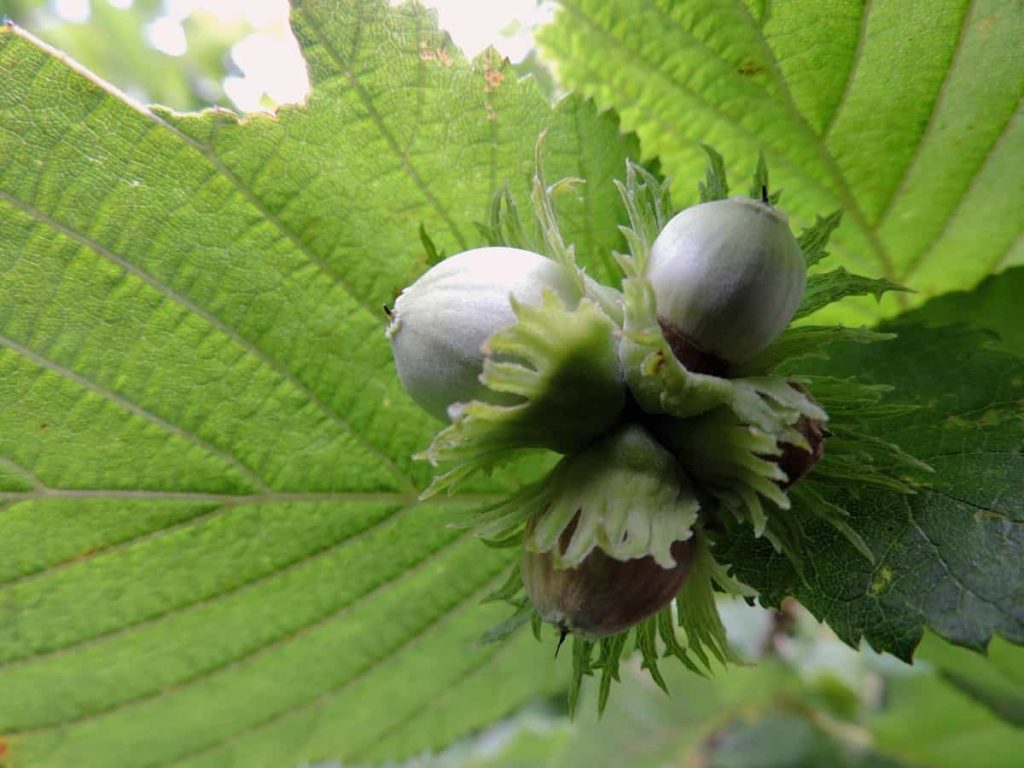
Plant the seeds in the fall and keep them protected over the winter with a thick layer of mulch or a cold frame. Also, you can plant them in pots and then store them in a greenhouse or indoors. They take several months to grow, so be patient. Wait for the seedling to grow 8-10 inches tall before transplanting. Hazelnuts planted from seed will take 7-8 years to become productive.
Step 7: Conditions for growing Hazelnut from suckers or runners
Another way to grow Hazelnuts is to find a bush of wild Hazelnuts. Hazelnuts can be propagated by underground runners or suckers spread around the bush. After the tree goes dormant in late fall, dig out a sucker and its roots, dig into the root ball and then pull out a runner with roots. After that, plant in a prepared bed about 20 feet between future plants.
To make the planting bed, mix existing soil with peat or sphagnum moss, vermiculite, and potting soil until you have an airy mixture. Usually, use two parts moss to one part vermiculite and add it to five parts existing soil and five parts potting soil. Plant the roots about 12 inches below the top soil line and mound the roots around the stems that extend above the ground and water well.
Step 8: Process for growing Hazelnut from transplants
The most common method of planting Hazelnuts is to purchase plants from a nursery. Plant Hazelnuts about 20 feet apart in full sun and dig a hole at least twice the root ball size to give the roots a good start. Then if needed, add some peat moss and potting soil to the soil in the hole to improve water retention and drainage. You can add sand—Hazelnuts like well-drained soil if you have heavy soil. Place the plant in the hole, but not too deep. Hazelnut roots like to grow close to the surface. Soak the plant thoroughly.
Step 9: Water quality and quantity for increasing plant health
Choosing a site with the proper quality and quantity of water is important because garden irrigation will improve plant health. Always collect and analyze the site to determine pH level, salinity, and other nutrients before use. It is important to ensure sufficient water sources to maintain the prescribed irrigation requirements for a particular field, as hot summers can bring drought and other complications with field management.
Newly installed plants need supplemental irrigation for at least two years. It involves periodic deep watering while allowing the soil in and around the plant’s root zone to dry out moderately between irrigations. Daily and frequent, shallow watering is discouraged. Soil type greatly affects moisture availability. High clay soils retain water longer than sandy soils. Cooler weather also reduces frequent irrigation, while warmer temperatures increase water requirements.
These should not be planted in turf where lawn and woody plants have different irrigation needs and compete for nutrients. After 2 to 3 years, Hazelnut trees need less frequent supplemental irrigation. Irrigate established plants 2 feet deep once a month during the hottest part of the year in loamy or loamy soils. Sandy or other fast-draining soils may need to increase this frequency to twice a month.
Step 10: Planting care for better yield
Hazelnut trees do not tolerate drought and need maximum moisture throughout the year. It requires 30 to 50 inches of rain annually, of which 14 to 16 inches are in the vegetative stage, which lasts from April to September. The Hazelnut plant should be plowed and cultivated in the first and second years of Hazelnut cultivation. After the sixth year, a low-cut lawn should be maintained on the row site. The area where the shrub or hazel tree grows should be regularly fertilized and mulched.
Never allow the soil around a Hazelnut tree or shrub to dry out completely. Water weekly during dry spells, allowing as much water as possible to penetrate deep into the soil. Hazelnuts do not need to be fertilized regularly if they are grown in good soil. If you notice slow growth and yellow leaves, the plant will benefit from a small amount of nitrogen fertilizer in the spring. When grown as a shrub, Hazelnuts require little or no pruning except to remove suckers from the roots.
To shape the tree, select six strong upper branches to form the central scaffold and remove the lower branches and any overhanging branches. Hazelnuts fall from the tree as they ripen in the fall. For easy harvesting, stack the nuts in a pile and collect them every few days. The first nuts can be empty. Consider Hazelnuts if you’re looking for a practical and attractive small tree. It is easy to grow, and you will enjoy the first nuts from your tree in at least four years.
In case you missed it: Top 20 Steps to Boost Cashew Yield: How to Increase Production, Cashew Size, and Quality
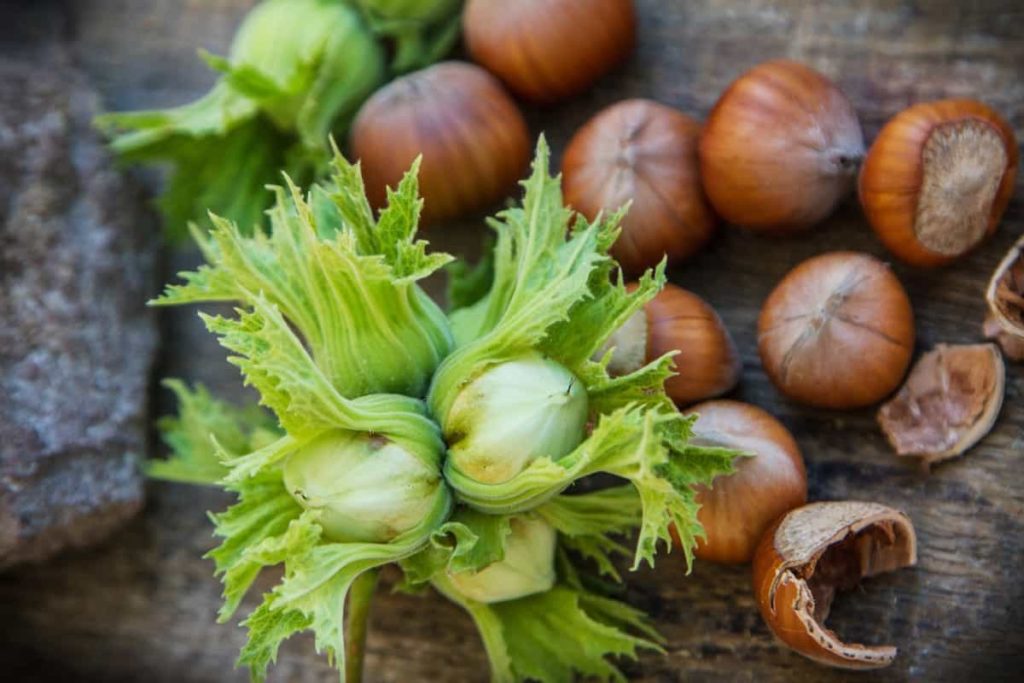
Hazelnuts prefer soil that is well-drained and fairly low in nutrients. Excessively rich soil causes excessive leaf growth at the expense of nuts and flowers. The Hazelnut trees have both male and female flowers; they are not self-fertile and always get better results so that the pollen can cross from one Hazelnut to another, even though other trees in the neighborhood may not. It also helps with pollination. Hazelnuts are usually grown as bushy shrubs and can be kept to a very manageable size by pruning.
Step 11: Pruning Hazelnut trees for more growth
Cut off the center branches, and shorten the lower laterals. Remove suckers growing through the canopy in spring before they harden. Replanting trees with 3- and 4-year-old wood is particularly helpful in stimulating new growth and can maintain production in older crowded trees. Pruning is done beyond its establishment stage to regulate the tree’s growth and give vigor to older trees. In Hazelnuts, it also removes diseased or dead wood to extend the orchard’s life.
Prune young trees lightly. Prune older trees as much as possible, especially if they have little growth. Don’t try to overcome years of neglect in one year. Do not remove more than 25-30% of the living canopy at any time. Hazelnuts can be harvested in winter, spring, or summer. Pruning during the winter (dormant season) will cause the most vigorous growth the following spring. Spring or summer pruning produces little return growth and is useful in removing suckers and low-hanging limbs.
Step 12: Choose drip irrigation for nut yield
- Increase nut yield and size – Maintain optimum moisture at each phenological stage of Hazelnut growth. Precision irrigation promotes uniform flower and fruit development, increasing nut yield and size.
- Hazelnuts have a shallow root system. Drip irrigation ensures that all fertilizer reaches the roots, not just the soil, avoiding runoff and optimizing your investment.
- Protect your crop from water stress – Water stress can damage your yield, resulting in smaller nuts, uneven filling, and lower crop value. Use drip irrigation frequently, avoiding stress.
- Maintain a dry surface – With drip irrigation, the surface between your rows stays dry, ensuring that the nuts on the ground do not suffer from rotting due to moisture. A dry surface also favors easy mechanical harvesting.
In case you missed it: Orange Farming, Planting, Growing, Care, Harvesting
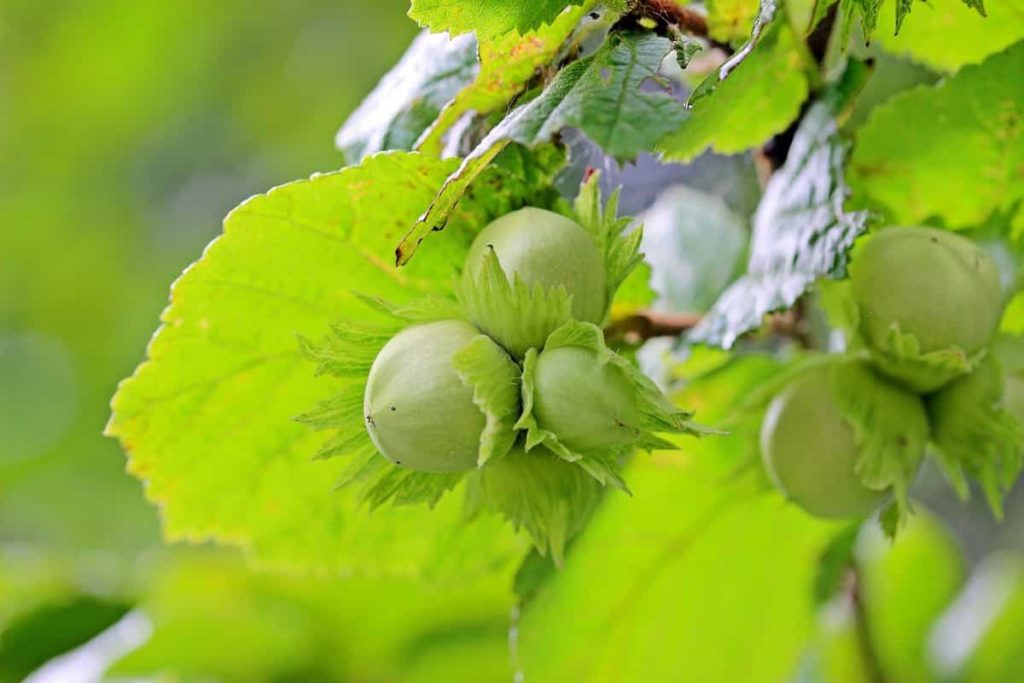
Step 13: Nutrients application for increasing crop yield
Hazelnuts benefit from a balanced nutrition program such as an annual application of a complete NPK fertilizer. Nitrogen, potassium, and boron are the elements commonly found in Hazelnuts. Nitrogen deficiency is indicated by short-shoot growth and pale green to yellow leaves. Calcium nitrate applied by fertigation provides N is readily available water-soluble form.
Calcium nitrate fertilizer grade is granular and is not lost to the atmosphere like other urea and ammonium-based fertilizers. Small leaves or small nut husks indicate a potassium deficiency. Muriate of potash is a cheap source of potassium and should be applied in autumn. Boron deficiency can be recognized by typical shoot tip dieback. Boron is applied as a foliar spray in the spring. If deficiencies are suspected, commercial soil tests should be used to identify them.
For established orchards, standards for leaf tissue analysis are available. Soil test results should be interpreted in consultation with your district horticultural advisor. Your Hazelnut tree must also be pollinated and fertilized to start producing nuts. While most trees bloom and pollinate during the spring, the Hazelnut tree is unusual, as it blooms and is pollinated during the winter. Despite the need for different cultivars for fertilization, Hazelnut trees bear both male and female flowers.
Male flowers are long and yellow, while female flowers are small and red. Pollen travels on the wind to the female flowers of the nut-producing tree during the winter. Pollen accumulates there, and the tree remains dormant until spring, when fertilization occurs, signaling the tree to begin producing nuts. Once the tree is established, you will begin to see Hazelnuts forming around May in its second to the fifth year.
Step 14: Harvesting tips for Hazelnuts
As the nuts mature, they begin to turn brown. Hazelnuts indicate that they have fallen from the tree and are ready to be harvested. Nuts fall from the tree in early August but are usually ready for harvest during September and October. Because of its dense canopy and obstruction to sunlight, Hazelnut trees typically have little turf grass growing beneath them, making it easier to find and harvest the nuts as they fall to the ground.
In case you missed it: Dryland Farming, Agriculture Technologies in India
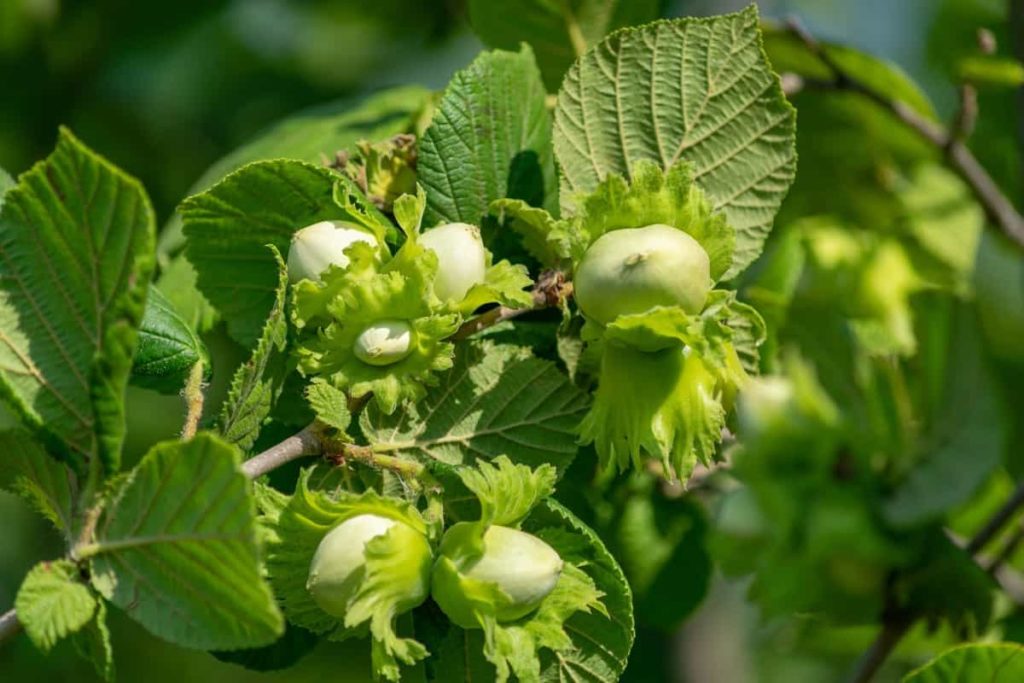
Hazelnuts begin to produce about three to five years after planting. Nuts are harvested in August, September, or late October, depending on your agricultural zone and variety. Remember that if you let them fall, hungry animals may end up on your bounty. Just shake the tree.
Step 15: Hazelnut yield per acre
Mature plants yield one to two gallons of nuts per bush or up to 25 pounds. The full production of Hazelnut yield is about 2,800 marketable pounds per acre.
Conclusion
Commercial Hazelnut trees prefer rich, light, well-drained soil, but the plants can tolerate a wide range of conditions. Hazelnuts grow in bunches and can have up to five pods each. Each Hazelnuts is in a shell; when removed, they are about an inch in size. The Hazelnut shell is brown, while the fruit is yellowish with a white mark in the middle. If you are thinking of growing your Hazelnut plantation, the above information can guide you in profitability.
- How to Make Houseplants Bushy: Effective Tips and Ideas
- Innovative Strategies for Boosting Coconut Pollination and Yield
- Pollination Strategies for Maximum Pumpkin Yield
- The Complete Guide to Chicken Fattening: Strategies for Maximum Growth
- Natural Solutions for Tulip Problems: 100% Effective Remedies for Leaf and Bulb-Related Issues
- Revolutionizing Citrus Preservation: Towards a Healthier, Greener Future
- Natural Solutions for Peony Leaf and Flower Problems: 100% Effective Remedies
- Maximizing Profits with Avocado Contract Farming in India: A Comprehensive Guide
- Natural Solutions for Hydrangea Problems: 100% Effective Remedies for Leaf and Flowers
- The Ultimate Guide to Choosing the Perfect Foliage Friend: Bringing Life Indoors
- From Sunlight to Sustainability: 15 Ways to Use Solar Technology in Agriculture
- The Ultimate Guide to Dong Tao Chicken: Exploring from History to Raising
- The Eco-Friendly Makeover: How to Convert Your Unused Swimming Pool into a Fish Pond
- Mastering the Art of Delaware Chicken Farming: Essentials for Healthy Backyard Flocks
- 20 Best Homemade Fertilizers for Money Plant: DIY Recipes and Application Methods
- How to Craft a Comprehensive Free-Range Chicken Farming Business Plan
- Brighten Your Flock: Raising Easter Egger Chickens for Beauty and Bounty
- How to Optimize Your Poultry Egg Farm Business Plan with These Strategies
- Subsidy for Spirulina Cultivation: How Indian Government Schemes Encouraging Spirulina Farmers
- Ultimate Guide to Raising Dominique Chickens: Breeding, Feeding, Egg-Production, and Care
- Mastering the Art of Raising Jersey Giant Chickens: Care, Feeding, and More
- Ultimate Guide to Raising Legbar Chickens: Breeding, Farming Practices, Diet, Egg-Production
- How to Raise Welsummer Chickens: A Comprehensive Guide for Beginners
- How to Protect Indoor Plants in Winter: A Comprehensive Guide
- Ultimate Guide to Grow Bag Gardening: Tips, Tricks, and Planting Ideas for Urban Gardeners
- Guide to Lotus Cultivation: How to Propagate, Plant, Grow, Care, Cost, and Profit
- Agriculture Drone Subsidy Scheme: Government Kisan Subsidy, License, and How to Apply Online
- Ultimate Guide to Raising Araucana Chickens: Breed Profile, Farming Economics, Diet, and Care
- Bringing Hydroponics to Classroom: Importance, Benefits of Learning for School Students
- Ultimate Guide to Raising Polish Chickens: Breed Profile, Farming Economics, Diet, and Care
- Ultimate Guide to Raising Australorp Chickens: Profile, Farming Economics, Egg Production, Diet, and Care
- Silkie Chicken Farming: Raising Practices, Varieties, Egg Production, Diet, and Care
- Sussex Chicken Farming: Raising Practices, Varieties, Egg Production, Diet and Care
- Homemade Feed Formulations for Livestock: Discover Cost-effective Starter to Finisher Feed Recipes
- 20 Best Pig Weight Gain Supplements: Top Swine Weight Gain Formulas
- Ultimate Guide to Elderberry Farming: Propagation, Planting, Yield, Cost, and Profit